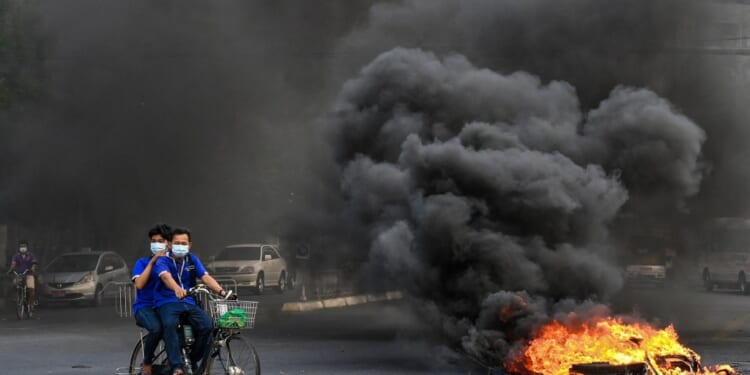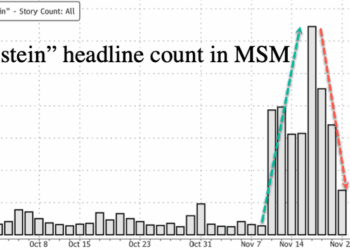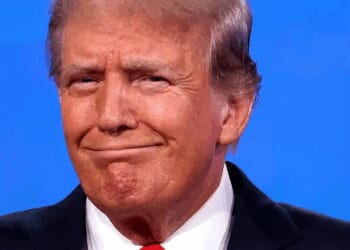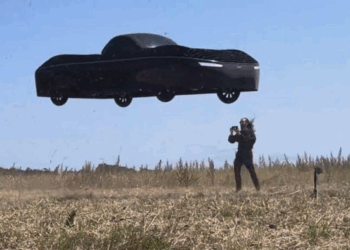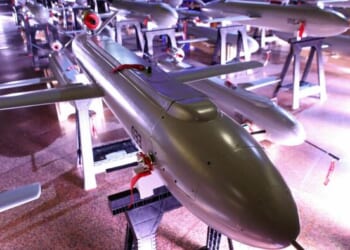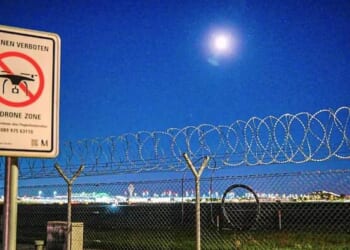Less than two weeks ago, one of the military’s motorized paragliders bombed the Burmese township of Chaung U, where approximately 100 civilians had gathered to celebrate a Buddhist holiday. The attack killed 24 people—including children—and injured 47 others. The military acknowledged its attack in a statement days later, criticizing rebel groups for supposedly “using civilians as human shields in their anti-government incitement campaigns.”
But it wasn’t an isolated incident. In April, the military conducted an airstrike it said was targeting “terrorists.” Local groups later verified that the strike killed at least 157 people, while the Washington Post reported in August that there were at least 25 children among those killed, including infants.
Burma—which the junta refers to as Myanmar—is no stranger to military rule. Outside the 10-year window of liberal democratic governance that lasted from 2011 to 2021, military junta commanders have governed the country for more than half a century, and they stole back power following a November 2020 national election in which the military’s political party underwhelmed at the ballot box. Junta leaders are currently planning, on December 28, to hold the first phase of elections to elect members of a new parliament, but this isn’t real democracy.
“The election is not an election,” Thomas Kean, a senior consultant on Burma and Bangladesh at the International Crisis Group and a journalist who has reported on the area since 2008, told TMD. “I mean, the military is essentially controlling the whole process.”
The military has maintained control of Burma’s capital city, Naypyidaw, along with the country’s most populated city, Yangon, and its second-most populated city, Mandalay. However, it has struggled to establish itself as the de facto governing body in the country. In 2024, the BBC reported that the military controlled a mere 21 percent of the country’s territory, while the armed opposing rebel coalition held power in a combined 42 percent of Burma.
The remaining third is contested and often caught in the throes of the civil war, with the country seeing more than 50,000 deaths—nearly 20 percent of whom were civilians—between 2021 and 2024, according to the Center for Excellence in Disaster Management and Humanitarian Assistance, a Defense Department unit that produces research on civil-military operations. In that span, only the Democratic Republic of Congo, Nigeria, and the Palestinian territories had higher civilian death tolls “resulting from conflict” than Burma. Recently, the military has launched aggressive campaigns to reclaim swaths of territory from rebel groups, partly to facilitate elections in those areas and lend legitimacy to the December election.
But its efforts to seize control have also isolated it from global partners. The junta used to move arms through Singapore, but in June 2024, Singapore’s Foreign Affairs Ministry announced it would “prohibit the transfer of arms” to Burma, due to the “military’s use of lethal force against unarmed civilians.”
“Evading sanctions has become harder than it used to be, because a lot of leading democracies, including Asian democracies, just tighten the screws,” Josh Kurlantzick, a senior fellow for Southeast Asia and South Asia at the Council on Foreign Relations, told TMD. The junta “can still get arms, but it’s gotten harder, and also they have almost no source of hard capital, so that also makes it harder.”
This has forced the military to adopt a lean and somewhat innovative approach to its battlefield operations. Helicopters and jets are increasingly falling into disrepair or being shot down, and the military has a scarce supply of jet fuel, which it cannot produce domestically. So, according to the Armed Conflict Location and Event Data Project, the military has deployed motorized paraglider bombers in at least 120 instances, such as the one used in its Buddhist festival attack last week. Such tactics may not look like innovative wartime technology, but as Kean explained, the junta “needs low-tech, cheap options that can be churned out quickly from its factories [and] require relatively little training,” and the paragliders have proven devastating.
But there is no long-term strategy here. Since Burma declared independence from the United Kingdom in 1948, and fighting between the government’s military and several armed ethnic minority forces broke out that same year, such clashes have rarely let up. “There’s no war plan,” Derek Mitchell, the former U.S. ambassador to Burma and current non-resident senior adviser at the Center for Strategic and International Studies, told TMD. “These guys, they’ve been fighting the same battle against ethnic minorities for 75 years. It’s really pathetic.”
He added that the killing of civilians is similarly not tactical. “It doesn’t get them anywhere. It’s not strategic. It’s just killing.”
The rebel forces resisting the military consist of armed ethnic minority fronts—many of which, according to Kurlantzick, “have actually battled each other over territory and resources” in the past—as well as new guerrilla militias formed since the 2021 coup. As Kurlantzick explained, after the military started jailing and killing protesters, many went “into the woods—Burma is still a pretty thickly forested place—where they crossed the border into Thailand, and they created a guerrilla army.”
Maintaining their alliance thus far has been “a miracle,” Kurlantzick added. “You have a loose coalition of these people who fled and tried to form an army—they’re mostly of the majority ethnic group—and then all these other much more historically weathered, battle-ready, and skilled ethnic minority groups all together fighting the junta.”
Gregory Poling, a senior fellow and director of the Center for Strategic and International Studies’ Southeast Asia Program and Asia Maritime Transparency Initiative, also emphasized that the rebel coalition resembles a network of anti-junta forces more than a single united front. “It’s not just a choice between engaging with a military and engaging with an opposition government,” he told TMD. “It’s more like engaging with two dozen different governments, some of which are trying to set up relatively democratic, stable institutions, some of which are narco-states.”
Against the backdrop of the ongoing civil war, the country has also faced economic strife. Burma’s currency, the kyat, inflated 34.1 percent in April from the 12 months prior. According to World Bank figures last updated in October 2024, Burma’s gross domestic product (GDP) is projected to shrink 2.5 percent in the 2025-26 fiscal year—in part, because of damage inflicted from a 7.7 magnitude earthquake in March.
“Because of the civil war, because different actors hold different parts of the country in so many different places, Myanmar is a failed state right now,” Kurlantzick said. “It’s become the world’s global hub for organized crime, narcotics crime, cyber scam crime, financial crime, and many others.” According to one analysis, the size of Burma’s illicit economy is more than half that of the country’s GDP.
Many Burmese seeking work turn to illegal industries, such as scam rings, as these are the only places where they can find employment. “They knew [scamming] was kind of illicit, but for them, it was [about] everyday survival,” Xu Peng, a postdoctoral researcher at the University of London’s School of Oriental and African Studies, told TMD. “Illicitness is kind of embedded in the Myanmar political economy. So, it wasn’t new for them.”
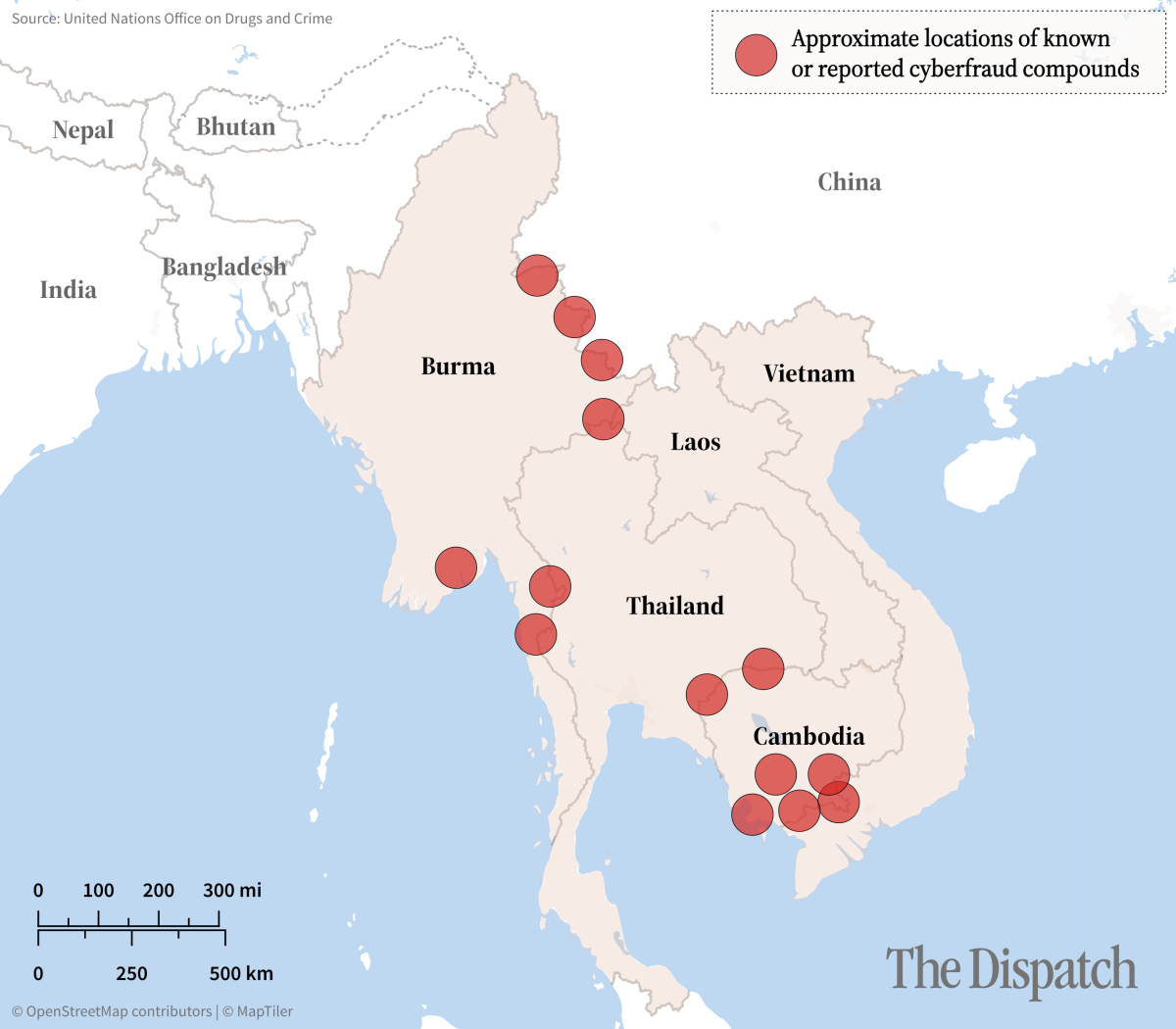
But since the COVID-19 pandemic, the country’s illicit economy has become more digitalized and moved largely online—in part because smuggling illegal goods across the Chinese border became far more difficult following China’s construction of a border wall to restrict crossings, which has remained in place beyond the pandemic. The wall has made it “basically impossible for people to cross the border,” Peng explained, so the market responded by creating a “digital version of the illicit economy.”
The World Bank concluded that, in the medium term, opportunities for economic growth and development within Burma are scarce, especially with no imminent end to the four-year-and-counting civil war. “Myanmar’s post-coup conflict has been absolutely devastating for people,” Kean explained, “not only economically, but also in terms of how they see the future.”
He added: “Many people just don’t have hope, right? They don’t see how this is going to end.”

